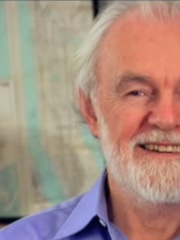
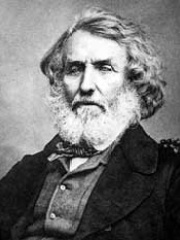
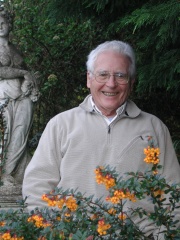

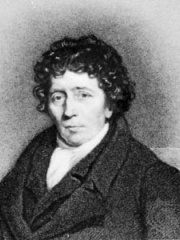
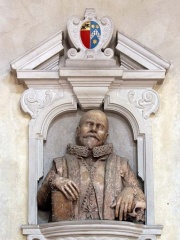
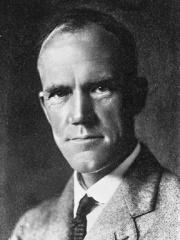
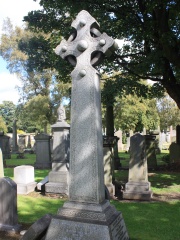
The Most Famous
GEOGRAPHERS from United Kingdom
This page contains a list of the greatest British Geographers. The pantheon dataset contains 86 Geographers, 9 of which were born in United Kingdom. This makes United Kingdom the birth place of the 2nd most number of Geographers.
Top 9
The following people are considered by Pantheon to be the most legendary British Geographers of all time. This list of famous British Geographers is sorted by HPI (Historical Popularity Index), a metric that aggregates information on a biography's online popularity.

1. David Harvey (b. 1935)
With an HPI of 73.17, David Harvey is the most famous British Geographer. His biography has been translated into 37 different languages on wikipedia.
David William Harvey (born 31 October 1935) is a British-American academic best known for Marxist analyses that focus on urban geography as well as the economy more broadly. He is a Distinguished Professor of anthropology and geography at the Graduate Center of the City University of New York (CUNY). Harvey has authored many books and essays that have been prominent in the development of modern geography as a discipline. He is a proponent of the idea of the right to the city. In 2007, Harvey was listed as the 18th most-cited author of books in the humanities and social sciences in that year, as established by counting citations from academic journals in the Thomson Reuters ISI database.

2. George Everest (1790 - 1866)
With an HPI of 71.39, George Everest is the 2nd most famous British Geographer. His biography has been translated into 53 different languages.
Sir George Everest, (, EEV-rist; 4 July 1790 – 1 December 1866) was a British surveyor and geographer who served as Surveyor General of India from 1830 to 1843. After a military education, Everest joined the East India Company and arrived in India at the age of 16. He was eventually made an assistant to William Lambton on the Great Trigonometric Survey, and replaced Lambton as superintendent of the survey in 1823. Everest was largely responsible for surveying the meridian arc from the southernmost point of India north to Nepal, a distance of about 2,400 kilometres (1,500 mi), a task that took from 1806 to 1841 to complete. He was made Surveyor General of India in 1830, retiring in 1843 and returning to England. In 1865, the Royal Geographical Society renamed Peak XV—at the time only recently identified as the world's highest peak—to Mount Everest in his honour. Andrew Scott Waugh, his protégé and successor as surveyor general, had been responsible for putting his name forward in 1856. Everest's name was used as a compromise due to the difficulty of choosing between multiple local names for the mountain. He initially objected to the honour, as he had had nothing to do with its discovery and believed his name was not easily written or pronounced in Hindi.

3. James Lovelock (1919 - 2022)
With an HPI of 67.17, James Lovelock is the 3rd most famous British Geographer. His biography has been translated into 48 different languages.
James Ephraim Lovelock (26 July 1919 – 26 July 2022) was an English independent scientist, environmentalist and futurist. He is best known for proposing the Gaia hypothesis, which postulates that the Earth functions as a self-regulating system. With a PhD in the chemistry of disinfection, Lovelock began his career performing cryopreservation experiments on rodents, including successfully thawing and reviving frozen specimens. His methods were influential in the theories of cryonics (the cryopreservation of humans). He invented the electron capture detector and, using it, became the first to detect the widespread presence of chlorofluorocarbons in the atmosphere. While designing scientific instruments for NASA, he developed the Gaia hypothesis. In the 2000s, he proposed a method of climate engineering to restore carbon dioxide–consuming algae. He was an outspoken member of Environmentalists for Nuclear Energy, asserting that fossil fuel interests have been behind opposition to nuclear energy, citing the effects of carbon dioxide as being harmful to the environment and warning of global warming due to the greenhouse effect. He wrote several environmental science books based upon the Gaia hypothesis from the late 1970s. He also worked for MI5, the British security service, for decades. Bryan Appleyard, writing in The Sunday Times, described him as "basically Q in the James Bond films".

4. Doreen Massey (1944 - 2016)
With an HPI of 57.42, Doreen Massey is the 4th most famous British Geographer. Her biography has been translated into 25 different languages.
Doreen Barbara Massey (3 January 1944 – 11 March 2016) was a British social scientist and geographer. She specialized in Marxist geography, feminist geography, and cultural geography, as well as other topics. She was Professor of Geography at the Open University.
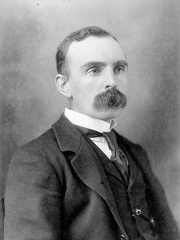
5. John Walter Gregory (1864 - 1932)
With an HPI of 57.00, John Walter Gregory is the 5th most famous British Geographer. His biography has been translated into 18 different languages.
John Walter Gregory, , (27 January 1864 – 2 June 1932) was a British geologist and explorer, known principally for his work on glacial geology and on the geography and geology of Australia and East Africa. The Gregory Rift in the Great Rift Valley is named in his honour.

6. Aaron Arrowsmith (1750 - 1823)
With an HPI of 56.14, Aaron Arrowsmith is the 6th most famous British Geographer. His biography has been translated into 16 different languages.
Aaron Arrowsmith (1750–1823) was an English cartographer, engraver, publisher and founding member of the Arrowsmith family of geographers.

7. John Speed (1551 - 1629)
With an HPI of 53.79, John Speed is the 7th most famous British Geographer. His biography has been translated into 22 different languages.
John Speed (1551 or 1552 – 28 July 1629) was an English cartographer, chronologer and historian of Cheshire origins. The son of a citizen and Merchant Taylor in London, he rose from his family occupation to accept the task of drawing together and revising the histories, topographies and maps of the Kingdoms of Great Britain as an exposition of the union of their monarchies in the person of King James I and VI. He accomplished this with remarkable success, with the support and assistance of the leading antiquarian scholars of his generation. He drew upon and improved the shire maps of Christopher Saxton, John Norden and others, being the first to incorporate the hundred-boundaries into them, and he was the surveyor and originator of many of the town or city plans inset within them. His work helped to define early modern concepts of British national identity. His Biblical genealogies were also formally associated with the first edition of the King James Bible. He is among the most famous of English mapmakers.

8. Thomas Griffith Taylor (1880 - 1963)
With an HPI of 49.91, Thomas Griffith Taylor is the 8th most famous British Geographer. His biography has been translated into 17 different languages.
Thomas Griffith "Grif" Taylor (1 December 1880 – 5 November 1963) was an English-born geographer, anthropologist, explorer, and academic. He was a survivor of Captain Robert Scott's Terra Nova Expedition to Antarctica (1910–1913). Taylor was a senior academic geographer at universities in Sydney, Chicago, and Toronto.

9. Alexander Keith Johnston (1804 - 1871)
With an HPI of 48.84, Alexander Keith Johnston is the 9th most famous British Geographer. His biography has been translated into 15 different languages.
Alexander Keith Johnston FRSE FRGS FGS FEGS LLD (died 9 July 1871) was a Scottish geographer and cartographer.
People
Pantheon has 9 people classified as British geographers born between 1551 and 1944. Of these 9, 1 (11.11%) of them are still alive today. The most famous living British geographers include David Harvey. The most famous deceased British geographers include George Everest, James Lovelock, and Doreen Massey.
Living British Geographers
Go to all RankingsDeceased British Geographers
Go to all RankingsGeorge Everest
1790 - 1866
HPI: 71.39
James Lovelock
1919 - 2022
HPI: 67.17
Doreen Massey
1944 - 2016
HPI: 57.42
John Walter Gregory
1864 - 1932
HPI: 57.00
Aaron Arrowsmith
1750 - 1823
HPI: 56.14
John Speed
1551 - 1629
HPI: 53.79
Thomas Griffith Taylor
1880 - 1963
HPI: 49.91
Alexander Keith Johnston
1804 - 1871
HPI: 48.84
Overlapping Lives
Which Geographers were alive at the same time? This visualization shows the lifespans of the 7 most globally memorable Geographers since 1700.

